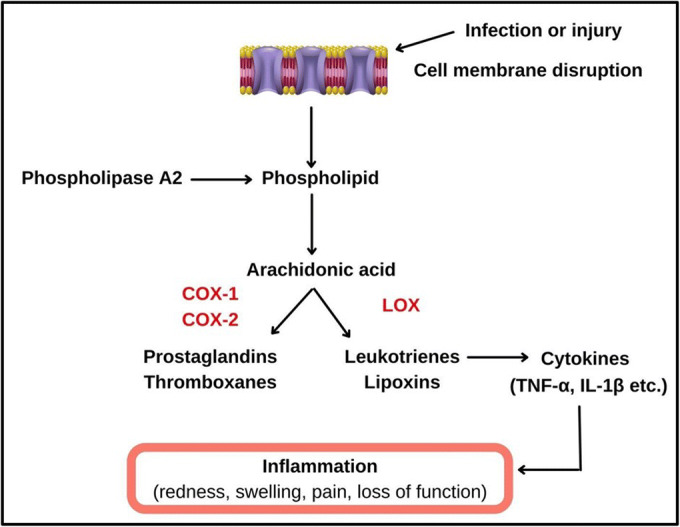Fig. 1.

Mechanism of inflammatory cascade: In the presence of a perceived threat or infection, the cell membrane disrupts and the enzyme phospholipase A2 acts on the phospholipid layer, hydrolysing the esterified arachidonic acid [51]. This polyunsaturated fatty acid metabolizes via enzymes such as cyclooxygenase (COX-1 and COX-2) and lipoxygenase to produce eicosanoids such as prostaglandins, leukotrienes, thromboxanes, and lipoxins. Leukotrines further instigates the production of inflammatory cytokines such as IL-6, IL-1β, and TNF-α causing inflammation [52].
